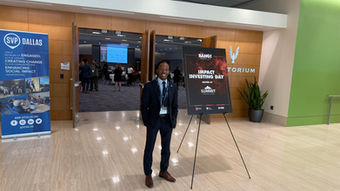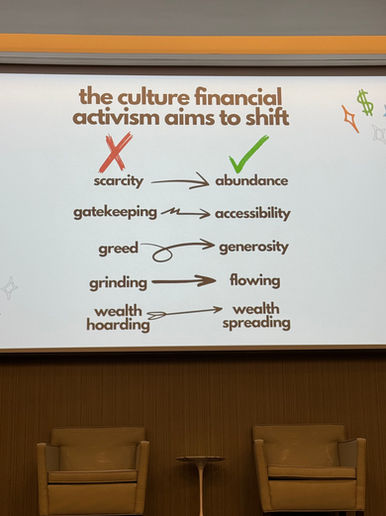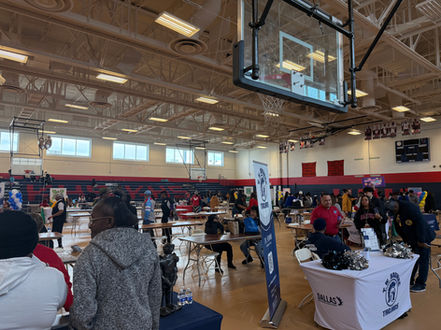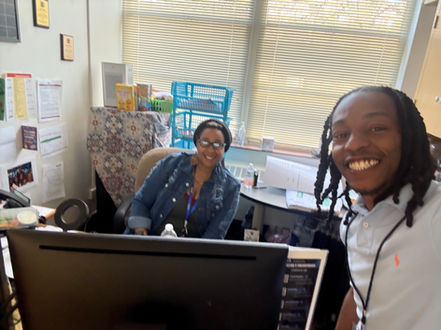top of page
Create Your First Project
Start adding your projects to your portfolio. Click on "Manage Projects" to get started
BACK 2 BUILD: Designing Shared Value Between Businesses and K-12 Schools (SMU Graduate Capstone)
INTRODUCTION
This project was born from the tension between good intentions and systemic failure. As a former teacher in Southern Dallas, I still remember the day the United Way and PepsiCo visited Umphrey Lee Elementary to “give back.” Our school—predominantly Black and Latino, with over 90% of students qualifying for free or reduced lunch—had more pressing needs than anyone could count. Students needed working HVAC systems, updated books, reliable Wi-Fi, and trauma-informed support. Teachers needed planning time, materials, and a reason to believe help was coming. What they got was a half-day photo op and a hastily planted garden that wilted as quickly as the volunteers' presence. Within months, the soil had dried, the space had withered, and the effort was gone, leaving no trace except the reinforced belief among students and staff that the outside world only shows up for appearances. That experience stuck with me.
Now, as I pursue a graduate degree in Design and Innovation, that moment returns with even sharper contrast. Next year, the newly launched Texas Stock Exchange is opening its doors in Dallas, with the ambition of positioning the city as the new financial capital of the South. Meanwhile, Dallas remains one of the most segregated cities in the United States, where opportunity is mapped as predictably as ZIP codes. While capital flows into gleaming towers in Uptown, just eight miles away a child at a public school in Oak Cliff may never meet a professional who looks like them or hear about a path beyond their immediate environment. According to the Urban Institute, Dallas has one of the highest rates of spatial inequality in the country, with public schools in lower-income neighborhoods facing up to 40% lower funding than their suburban counterparts due to Texas’s property tax-based funding model. This economic bifurcation is not theoretical—it is lived, daily, by students who deserve far more than an ornamental garden.
This isn’t just about resource gaps. It’s about power, proximity, and whose future is being designed in the boardrooms that hover just beyond reach. If we are to interrupt this pattern, we must do more than patch holes. We must co-create a system where local businesses don’t merely give charity but reinvest in the ecosystems that once raised them—where alumni business owners and community leaders activate networks to support schools not through pity, but purpose.
Looking ahead, I believe the urgency will only intensify. Current economic indicators suggest a potential recession in 2026. In such a downturn, school districts—already strained—will likely see municipal and state funding narrow even further. When this happens, the traditional solution will be to issue city bonds, adding debt and dependence. But I believe in a different model. A model rooted in collective well-being, where schools, alumni, and local businesses share responsibility and benefit. Where community support is not a substitute for public investment, but a supplement shaped by proximity, trust, and reciprocity. And where education is protected not only by policy but by people.
This capstone is not just research. It’s an act of reclamation—of value, of agency, and of futures long ignored.
DESIGN RESEARCH QUESTION
At the heart of this capstone is the question: How might we create shared value between businesses and K-12 schools?This is not simply a question of improving programs or increasing donations; it is a question of rethinking the entire logic behind how businesses engage with schools. Too often, school-community partnerships are viewed as charitable efforts—extracurricular to a company's core mission. But when framed through the lens of business strategy rather than school initiative, the value proposition shifts.
According to the Federal Reserve Bank of San Francisco, one of the most common failures in community investment efforts is a fixation on outputs rather than outcomes. Outputs measure activity—how many volunteer hours were logged, how many students attended an event. Outcomes, on the other hand, measure change—how students' academic, social, and economic trajectories are altered over time. The Fed argues that “an outcomes orientation” is essential to closing opportunity gaps, especially in historically marginalized communities. Their research underscores the need for intentional, measurable, and long-term engagement strategies—not performative gestures. In short: if businesses are investing without strategy, alignment, or feedback mechanisms, they are not creating shared value—they are replicating old hierarchies under new language.
By approaching this as a question of strategic alignment—between the needs of educational ecosystems and the long-term goals of business development—we invite companies to see their role in education not as a favor, but as a future-facing investment. This reframing unlocks new models of collaboration: where alumni-owned businesses become legacy builders, where student insight drives innovation, and where companies measure returns in both human and economic capital.
This research asks not what schools can do to attract corporate support, but what small business ecosystems stand to gain by rooting their success in the communities that raised them.
CONTEXT
To understand the urgency and opportunity behind this project, it is important to first contextualize it within a broader body of secondary research. As outlined in numerous studies from McKinsey, Brookings, the Urban Institute, and the U.S. Census Bureau, public schools in under-resourced areas of Dallas face a confluence of challenges—educational inequity, infrastructure disrepair, and workforce disconnects. According to McKinsey (2021), 65% of companies report a skills gap in their current workforce, and this number is projected to rise to 87% by 2027. Meanwhile, PwC (2021) estimates an $8.5 trillion GDP loss in the U.S. by 2030 if talent shortages persist. These statistics reflect not only a business risk, but a missed opportunity to build stronger bridges between future workers and present employers.
The educational system itself contends with a trilogy of systemic inequities: the skills gap, where students lack access to the competencies needed in today’s economy; the opportunity gap, where students are excluded from vital career pathways due to their environment or network; and the achievement gap, which reflects long standing disparities in test scores and academic performance across racial and economic lines. Each of these gaps compounds over time. But the focus of this research is on a quieter, more invisible obstacle: the perception gap.
The perception gap refers to the disconnect between how corporations perceive their impact and how schools and communities experience it. This insight is supported by Bhattacharya and Sen (2004), who argue that businesses frequently overestimate the positive effects of their CSR activities. Elsbach (2003) builds on this by introducing the concept of organizational perception management—how institutions craft narratives to shape how they’re seen, often without grounding those narratives in the lived realities of their stakeholders. The result is a landscape where businesses may point to high-impact CSR reports, while schools point to wilted gardens and one-off visits.
This capstone builds on the work of Porter and Kramer (2011), whose concept of Creating Shared Value (CSV) pushes the conversation beyond traditional corporate social responsibility. While CSR often exists as an adjacent or discretionary part of a company’s portfolio—sometimes driven by optics—CSV embeds social improvement directly into business strategy. Preston (n.d.), in his response to critics of shared value, writes that CSV is a more evolved model that “avoids trading off social good for business outcomes by tying the two together at the root.” In this view, solving community problems becomes a pathway to corporate advantage—not a sacrifice, but a strategy.
Through this lens, the aim is not to make CSR more efficient. The aim is to change the operating logic entirely: from symbolic gestures to structural alignment, from quarterly volunteerism to quarterly returns measured in cultural capital, career access, and community trust.
This project is designed to explore that transformation—starting with Dallas, and using the local school-business dynamic as a testbed for larger systemic shifts.








































bottom of page

